Moose
Alces alces
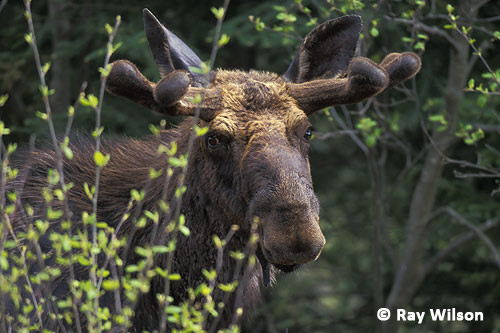
Male - Algonquin Provincial Park, Canada - May 2000
The common names of the large deer of northern latitudes can be quite confusing. In Europe, the Moose is called the Elk, which incidentally is also the name used for the North American race of Red Deer (Cervus elaphus; or Wapiti as it is also known).
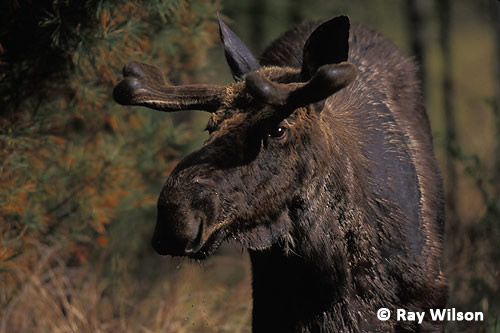
Male - Algonquin Provincial Park, Canada - May 2000
The Moose is the largest member of the deer family in the world, on average measuring 2.5m from nose to tail and weighs almost 500kg.
 |
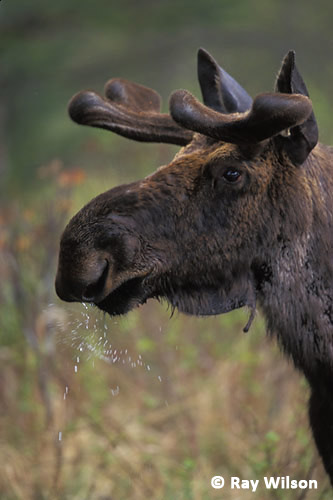 |
Male - Algonquin Provincial Park, Canada - May 2000
In spring the males start to regrow their antlers. Like all deer, the growing antlers are covered in "velvet" which provides a supply blood and nutrients. Once the antlers are fully grown, the velvet is shed leaving the bare bone ready for combat. In early winter, after the rutting season is over, the antlers break off and the cycle begins again.
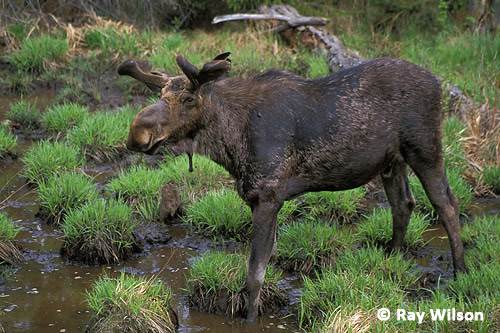
Male - Algonquin Provincial Park, Canada - May 2000
The fully grown antlers of a mature male are enormous and can reach a maximum width of just over 2m!
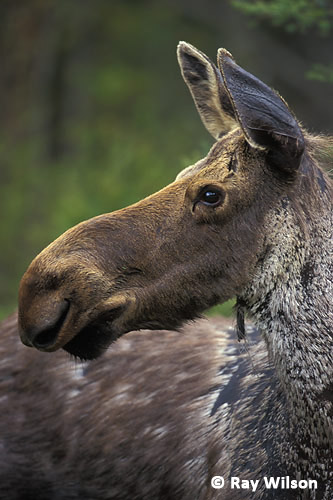 |
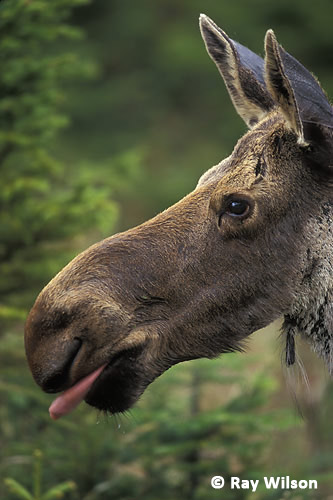 |
Female - Algonquin Provincial Park, Canada - May 2000
In early spring, moose are easily observed at the roadside in Algonquin Provincial Park (about 100km north of Toronto) after the winter snows melt. The salt used for helping to keep the road clear in the winter is concentrated in the roadside pools and the moose congregate to take advantage of this abundant mineral supply.
Ray Wilson owns the copyright of all images on this site.
They may not be used or copied in any form without prior written permission.
raywilsonphotography@googlemail.com
